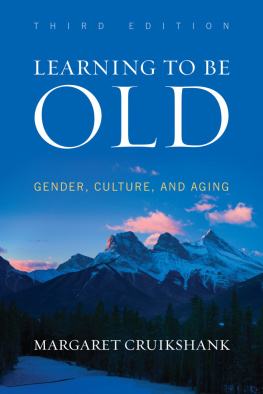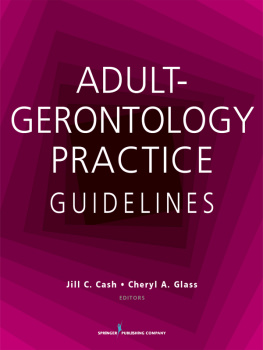

First edition published in Great Britain in 2017 by
Policy Press University of Bristol 1-9 Old Park Hill Bristol BS2 8BB UK Tel +44 (0)117 954 5940 e-mail
North American office: Policy Press c/o The University of Chicago Press 1427 East 60th Street Chicago, IL 60637, USA t: +1 773 702 7700 f: +1 773-702-9756 e:
Policy Press 2017
British Library Cataloguing in Publication Data
A catalogue record for this book is available from the British Library.
Library of Congress Cataloging-in-Publication Data
A catalog record for this book has been requested.
ISBN 978-1-4473-2838-4 paperback
ISBN 978-1-4473-2839-1 ePub
ISBN 978-1-4473-2840-7 Mobi
ISBN 978-1-4473-2841-4 ePdf
The right of Kate de Medeiros to be identified as the author of this work has been asserted by her in accordance with the Copyright, Designs and Patents Act 1988.
Every reasonable effort has been made to obtain permission to reproduce copyrighted material. If, however, anyone knows of an oversight, please contact the publisher.
All rights reserved: no part of this publication may be reproduced, stored in a retrieval system, or transmitted in any form or by any means, electronic, mechanical, photocopying, recording, or otherwise without the prior permission of Policy Press.
The statements and opinions contained within this publication are solely those of the authors and not of the University of Bristol or Policy Press. The University of Bristol and Policy Press disclaim responsibility for any injury to persons or property resulting from any material published in this publication.
Policy Press works to counter discrimination on grounds of gender, race, disability, age and sexuality.
Cover design by Policy Press
Front cover image kindly supplied by Fotolia
Readers Guide
This book has been optimised for PDA.
Tables may have been presented to accommodate this devices limitations.
Image presentation is limited by this devices limitations.
For my mentors,
Dr. Thomas Cole and Dr. Robert Rubinstein
Contents
There are several people I would like to thank for their help with this book. First and foremost, I would like to thank the anonymous referees who provided input on my initial draft. Your thoughtful comments were extremely helpful and appreciated.
I would also like to thank my two primary mentors, Dr. Thomas Cole and Dr. Robert Rubinstein. Dr. Cole introduced me to the field of gerontology for which I am extremely grateful. Dr. Rubinstein guided me through my doctoral program and the rich world of qualitative research. Thank you both for being a part of my life all these years and for your continued mentorship.
Thanks also goes to my graduate school classmates Dr. Kelly Niles-Yokum, Dr. Dan Van Dussen, and Mr. David Hamilton. We spent many long nights thinking about what it meant to be a gerontologist. I wouldnt be writing this book if it werent for you.
My thanks also goes to my colleagues at Miami University. I am fortunate to work with a wonderful group of researchers and scholars who are always willing to discuss and consider gerontology and its evolution. I also want to acknowledge the undergraduate and graduate students who continue to push the field of gerontology forward; the older people with whom Ive spoken over the years about their thoughts, experiences and insights; and my family who continue to be a source of inspiration.
Several years ago, when I was still a graduate student in gerontology, I presented a paper at the Gerontological Society of America conference in a symposium focused on doctoral training in gerontology. The papers title, When I looked around I saw and heard of none like me, was a quote from Mary Shellys Frankenstein in which the creature recognizes that he and his creator (Victor Frankenstein) are different. Victor had a well-established place in society. The creature was alone, without a defined place or sense of belonging. He bore many similarities to Victor, but was also substantially different. As such, Victor could never really understand the experience of being a new entity set loose in the world.
I found that this metaphor described my feelings at the time. I was learning about gerontology from scholars who were experts in their fields anthropology, sociology, epidemiology, policy. Yet, they were still embedded within a traditional discipline with corresponding theories, methods, histories, and journals grounded in those perspectives. Even gerontological organizations didnt recognize gerontology as a field of study. Consequently, we myself and my classmates were different. We were being exposed to several disciplinary perspectives focused on the study of aging, yet we did not belong to these disciplines. It was difficult to see where we fit. To complicate matters further, most of the gerontology programs hiring new faculty then would not consider candidates with degrees outside of a traditional discipline. It seemed as though our kind of gerontologist was not welcome. Thankfully, times have changed.
The Frankenstein metaphor is meant to suggest that the landscape of gerontology looked and felt very different to those of us who were trying to make sense of the multiple theories, perspectives, approaches and concepts that spanned numerous disciplines than perhaps it did to others who were nested within recognized disciplines. This sense of wanting to see the landscape of gerontology laid out, without disciplinary boundaries, was the motivation behind this Short Guide. As gerontology has evolved into its own discipline, now with many others like me as well as people trained in traditional disciplines who focus their research on aging, the time seemed right to try to make sense of it all, if such a thing is possible.
Overview of The Short Guide
Since the study of later life or old age covers a vast gamut of experiences, meanings, outcomes and goals, it is important to bring together multiple perspectives to look at aging. Multiple perspectives are what make gerontology both exciting in its possibilities and frustrating in its messiness. I see three overarching aspects of aging that link the topics and perspectives within the chapters, each to varying degrees. These are: structure, experience and care. Structure refers to systems (for example, social, policy-related) and their relationship to aging. Experience describes individuals reactions to structures and to aging. Care describes both acts of providing care (such as informal caregiving) and of showing concern for or caring about others. These concepts are deeply intertwined. For example, the social location one holds is determined by larger social structures. These structures will affect experience in various ways, such as facilitating or inhibiting access to resources (for example, healthcare, education). These structures also will affect attitudes toward aging individuals (such as concern) and expectations about care (such as are older people expected to care for their grandchildren? Is the government responsible for financing services to provide care for older residents?). Although these concepts are not always explicitly mentioned throughout the text they are present in the background.








